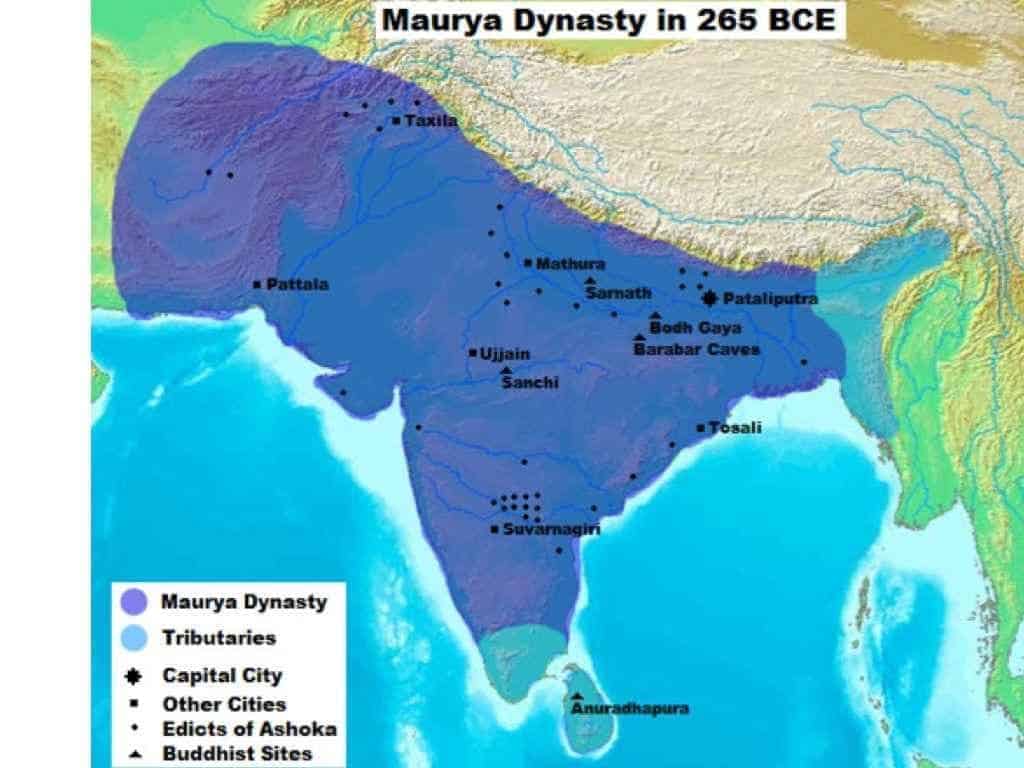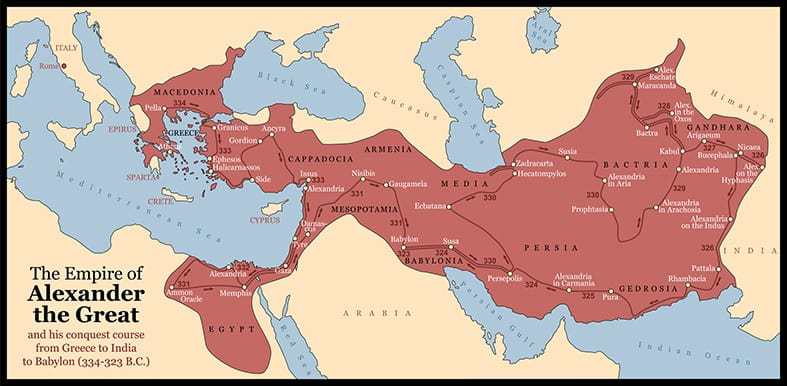Today many people are familiar with some of the great empires in history, those that spanned continents and ruled over millions, such as the Roman Empire, the British Empire and the Ottoman Empire. But few are very familiar with the early empires, those that existed in years long before the modern era, long before the medieval era. The first empires to conquer and change the world occurred in the years B.C. according to the Christian calendar.
These empires are chosen based not only on their size but on their influence on the world around them and the people and empires that would come after them. Some you may know while others are often forgotten.
1. The Maurya Empire 322 – 185 B.C.

The Maurya Empire was founded by Chandragupta Maurya and Chanakya. Chandragupta Maurya’s rise to power is largely unknown but his empire began when he conquered the Nanda Empire at just 20 years old. At the time the empire spanned through the northern part of what is now modern day India. In 305 B.C. Chandragupta expanded the borders to the Northwest following his victory over Seleucus I Nicator of the Seleucid Empire. In the final expansion under his reign, he drew the borders further south to encompass nearly all of modern day India by 300 B.C.
The Empire was divided into four provinces, each headed by a royal prince who would govern as a representative of the King. There was a vast infrastructure with a civil service that was in control of everything from trade with other empires to the hygiene of the local populace. The empire also maintained one of the largest armies of its time with over 600,000 infantry, 9,000 war elephants and 30,000 cavalry. A spy system gathered information on enemies both local and abroad.
The stability of the empire led to a growing economy and a fair taxation system. Chandragupta Maurya created a single currency throughout the empire which made it easier for farmers to sell their crops for a fair price. The empire also developed a profitable system of international trade with the Greek states and the Hellenic kingdoms. The economy was so well managed it would later be compared to that of the Roman Empire.
At its height the Maurya Empire ruled over nearly 60 million people, making it one of the most populated empires in ancient history. Spanning over 2 million square miles it was also one of the largest ancient empires ever to exist. The Shunga coup in 185 B.C. ended the Mauryan dynasty and the peace and stability it had brought to the region.

